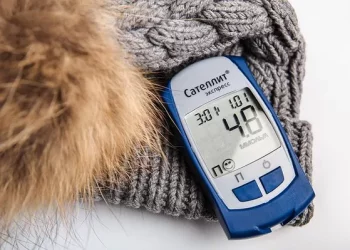Monitoring blood glucose levels is a cornerstone of effective diabetes management. Advances in technology have given rise to new methods for tracking glucose levels with greater convenience and precision. Among these innovations, Flash Glucose Monitoring (FGM) has emerged as a game-changer, offering individuals with diabetes a more comfortable, insightful, and user-friendly approach compared to traditional fingerstick testing.
In this article, we will explore Flash Glucose Monitoring in depth — what it is, how it works, its advantages and limitations, and how it compares to other glucose monitoring systems. Whether you are a patient, caregiver, or healthcare professional, understanding FGM is essential to navigating the evolving landscape of diabetes care.
Understanding Flash Glucose Monitoring
Flash Glucose Monitoring is a system designed to measure interstitial glucose levels — that is, the glucose present in the fluid surrounding the body’s cells — through a sensor worn on the skin. Unlike traditional blood glucose meters, which require a finger prick to obtain a drop of blood, FGM provides real-time glucose readings by scanning the sensor with a handheld reader or smartphone.
The most commonly recognized Flash Glucose Monitoring system is the FreeStyle Libre series by Abbott Laboratories, although other brands and newer models are continually entering the market.
The key feature that distinguishes FGM from other continuous glucose monitoring (CGM) systems is the “flash” aspect — users actively scan the sensor to get a reading, rather than having data transmitted continuously.
How Flash Glucose Monitoring Works
FGM systems consist primarily of two components:
Sensor: A small, round device worn on the skin, usually on the back of the upper arm. The sensor contains a thin, flexible filament inserted just under the skin, which measures interstitial glucose levels.
Reader or Smartphone App: A handheld device or compatible smartphone app that scans the sensor to display current glucose levels, trends, and historical data.
When the user waves the reader over the sensor, it retrieves stored glucose data and provides the following information:
-
Current glucose reading
-
A trend arrow showing whether glucose is rising, falling, or stable
-
A graph of glucose history, typically covering the previous 8 hours
The sensor automatically measures glucose levels every minute and stores readings at 15-minute intervals. Most sensors last for 10 to 14 days before they need to be replaced.
The Science Behind Flash Glucose Monitoring
FGM measures glucose levels in the interstitial fluid, not directly in the bloodstream. Because of this, there is a slight lag between interstitial glucose and blood glucose levels, typically around 5–15 minutes. This lag is generally insignificant for day-to-day management but may become more noticeable during rapid changes in glucose, such as after eating or exercising.
The sensor uses an enzyme called glucose oxidase. When glucose interacts with this enzyme on the sensor’s filament, it produces an electrical signal proportional to the glucose concentration. This signal is then translated into a glucose reading by the reader or smartphone app.
Despite the differences between blood and interstitial glucose measurements, studies show that FGM provides accuracy that is clinically acceptable for most therapeutic decisions.
Advantages of Flash Glucose Monitoring
Flash Glucose Monitoring offers numerous benefits over traditional fingerstick testing and some continuous glucose monitoring systems:
1. Reduced Need for Fingersticks
One of the most significant advantages of FGM is the drastic reduction in finger-prick tests. Although occasional calibration or confirmation may be needed in certain circumstances (e.g., symptoms do not match readings), for most users, fingersticks are no longer a daily necessity.
2. Discreet and Painless Glucose Monitoring
Scanning the sensor is quick, painless, and can be done through clothing, allowing for discretion in social settings or at work.
3. Comprehensive Data Trends
FGM not only provides a snapshot of the current glucose level but also historical data and trend arrows. This allows users to make more informed decisions about food, activity, and insulin management.
4. Better Hypoglycemia Management
With frequent scans and real-time access to glucose trends, users can identify impending hypoglycemia before symptoms become severe. Some newer models even offer optional alarms for low or high glucose levels.
5. Improved Glycemic Control
Studies show that people who use FGM often experience better overall glycemic control, reduced HbA1c levels, and fewer episodes of hypoglycemia compared to those relying on traditional blood glucose monitoring alone.
6. Enhanced Quality of Life
Users often report improved quality of life, decreased diabetes distress, and greater confidence in managing their condition due to the ease and accessibility of data.
Limitations of Flash Glucose Monitoring
While FGM has numerous advantages, it is important to recognize its limitations:
1. Lack of Real-Time Alerts in Older Models
Early versions of FGM systems do not provide automatic alarms for hypo- or hyperglycemia. Users must actively scan the sensor to obtain readings. However, newer generations like the FreeStyle Libre 2 and Libre 3 now include optional alarms.
2. Time Lag Between Blood and Interstitial Glucose
Because of the physiological lag, FGM readings may not always accurately reflect blood glucose during rapid changes. For instance, during exercise or after meals, blood sugar may change faster than interstitial fluid glucose.
3. Sensor Adhesion Issues
Some users experience problems with sensor adhesion, particularly in hot, humid environments or during vigorous physical activity. Skin irritation or allergic reactions to adhesives are also possible.
4. Accuracy Variability
Although FGM is generally accurate, certain conditions — such as dehydration, compression of the sensor, or very low glucose levels — may lead to less reliable readings.
5. Costs and Insurance Coverage
Although often less expensive than real-time CGM systems, FGM can still be costly, especially for users without comprehensive insurance coverage. The cost of sensors and readers can add up over time.
Who Should Consider Flash Glucose Monitoring?
FGM is a valuable tool for many individuals with diabetes, but it is particularly beneficial for:
-
People with Type 1 diabetes who require frequent glucose monitoring.
-
Individuals with Type 2 diabetes on intensive insulin therapy.
-
Those who experience hypoglycemia unawareness (difficulty sensing low blood sugars).
-
Patients seeking better insight into how food, activity, stress, and medication affect their blood sugar.
-
Adolescents and active adults who prefer discreet, easy monitoring.
Healthcare providers may recommend FGM based on individual needs, lifestyle, and diabetes management goals.
Best Practices for Using Flash Glucose Monitoring
To maximize the benefits of FGM, users should follow these best practices:
Scan Frequently: Regular scans — at least every 8 hours — ensure complete data collection and minimize data gaps.
Interpret Trends: Use trend arrows to anticipate glucose changes, not just react to current readings.
Confirm When Necessary: Perform a fingerstick test if symptoms do not match the sensor reading, especially during rapid glucose changes.
Proper Sensor Placement: Always apply sensors to recommended areas (typically the upper arm) and avoid areas with excessive movement or pressure.
Protect the Sensor: Use additional adhesive patches if necessary to secure the sensor during physical activity or water exposure.
Review Data Trends with Your Healthcare Team: Share data during checkups to refine your diabetes management plan.
Future Developments in Flash Glucose Monitoring
The landscape of FGM technology continues to evolve rapidly. Future developments may include:
Smaller, Longer-Lasting Sensors: Reducing sensor size and extending wear time beyond 14 days.
Integration with Insulin Pumps: Closed-loop systems that integrate FGM with automated insulin delivery.
More Affordable Options: New competitors may drive prices down, making FGM more accessible.
Expanded App Features: Enhanced data interpretation, machine learning algorithms, and predictive analytics for even smarter diabetes management.
Manufacturers are investing heavily in research and development to meet the growing demand for smarter, more user-friendly glucose monitoring solutions.
Conclusion
Flash Glucose Monitoring has revolutionized the way individuals with diabetes monitor and manage their glucose levels. With its user-friendly design, painless scanning, and rich data output, FGM offers significant advantages over traditional fingerstick testing. While it is not without limitations, for many, the benefits far outweigh the drawbacks.
As technology advances, FGM systems will likely become even more integrated, predictive, and affordable, empowering people with diabetes to take greater control of their health. Healthcare providers and patients alike must stay informed about these tools to optimize diabetes care and enhance quality of life.
By adopting a proactive approach and using the wealth of data provided by FGM, individuals with diabetes can make more informed decisions — leading to better outcomes and a healthier future.
Related topics:
What Is a Continuous Glucose Monitor?


























